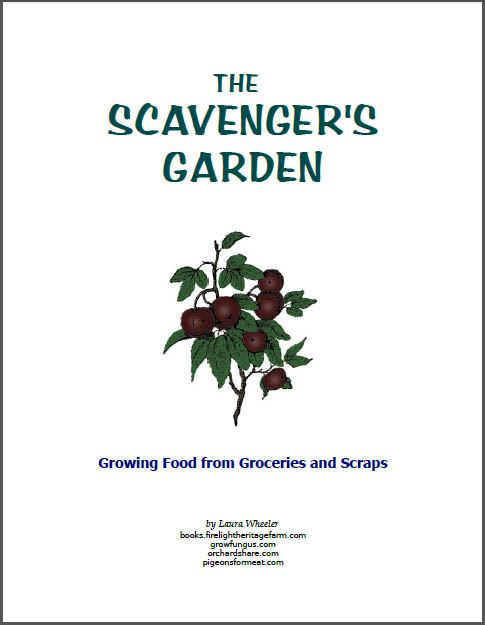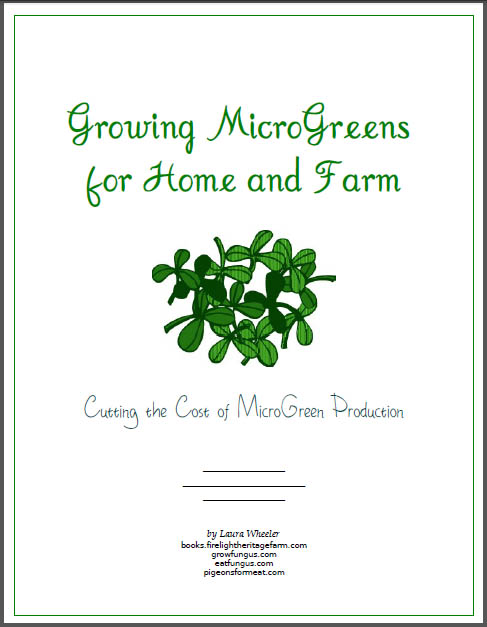 Click to Download Your Free Heritage Pickling and Culturing e-Book Now!
Click to Download Your Free Heritage Pickling and Culturing e-Book Now!
Instant Download, NO Registration Required!
How Long Do Garden Seeds Last?
I've read that the viability of seeds declines for each year of age, and I've also read that some seeds are more vulnerable to this decline than others. But I haven't personally been able to verify this. My experiences have suggested that the method of storage is important, and that the viability of seeds will largely depend upon that, but beyond that, I have not ever noticed a decline in germination rates due to the age of the seed.
According to USDA regulations, seeds sold for the purpose of germination are required to have at least a 70% germination rate (they universally exceed this except for some, like seedless watermelon, that have low germination rates to begin with). And according to most sources that I've found, the majority of seeds will keep that, far past the second or third year after initial gathering, provided they are not subjected to NEGATIVE conditions.
Personal experience has shown that the vast majority of seeds can be effectively stored far longer, with high germination rates.
What typically happens is that I buy a bunch of seeds. I plant most of them, but I have half a packet of this, an extra packet of that, and those get left in my basket or box, and reserved to re-use next year. When we are limited to container gardening, seeds can carry over from one year to the next, for three or four years. I don't throw them out, I just plant a few more if I think they might be affected by age (and I typically end up with having to thin a LOT because they all sprout anyway).
So what are the factors that affect the preservation of seeds?
1. Moisture. This is THE BIGGIE! Seeds need to be stored in a moisture-proof container. Even ziplock baggies will do in most situations. My favorite solution is to save the seed packets in a large glass jar, or in several glass jars (ok, I am a seed addict!), and glass does protect against air and moisture better than plastic.
2. Temperature. This is the second most important factor. Seeds store best at a COOL temperature - NOT freezing. Between 40 and 60 degrees is good. Some people say CHANGES in temperature are the culprit, but this is not the problem, it is only temperatures that are VERY warm, or those that are VERY cold that will damage the seeds. Freezing temperatures can kill SOME kinds of seeds, but not all. Most of your garden seeds are designed by nature to hibernate in freezing temperatures. Hot temperatures will shorten the seed life of virtually all seeds. Very hot temps can outright kill them, but usually that is not the issue. Normally it is just that you forgot to put them away, and they sat in the hot garage instead of being brought into the air conditioned house, or that your home (like mine) has no air conditioning, and you neglected to move them to the basement or the refrigerator for the summer. Usually this will not affect them radically the first year, but will noticeably affect germination rates if you save them for four to six years.
3. Light. The packet the seeds are in does offer a little protection against light, but the affects of light on seeds is minimal. I've stored seeds in an open basket for several years, and they were still viable. I've had them in clear containers and had them sprout like nobody's business. If you can keep them in the dark, it will be better. But if you cannot, I'd not expect more than a slight difference between those that are protected from light.
The first year we had a greenhouse, I had neglected to purchase any seeds to start in autumn. The seeds I started were all leftovers. The most remarkable were dill seeds. I had no packets of dill seeds. What I did have, was a bottle of dill seed in my spice cupboard. It had to have been 10 years old, had sat there on a shelf, right next to the heat outlet for the fridge, in a clear bottle that did not do anything except protect it from moisture. In the summer, that kitchen got WARM.
I planted those seeds anyway. I figured the germination rate might be low, so I planted them all, in a space maybe 2 ft by 3 ft. It was a small bottle, but it had a good 2 tablespoons full of seed in it. Scattered across the soil and stirred in. I can't really be certain what percentage of those seeds sprouted, but we had dill coming up so thick and pretty that it looked like a LAWN. I was able to thin it and use the tops and toss the bottoms to the chickens, and then later snip baby dill until the nighttime temps in the greenhouse got so severe that the dill could not recover.
So here is our self-sufficiency tip for the day:
For Emergency Seed Storage, Follow this Plan
- Buy extra seeds, of the type you prefer to grow, whenever you are able.
- Write the YEAR PURCHASED on the package in big letters on the front. Yeah, the packets already say the year they were packaged for, but write it big so you don't have to spend a lot of time hunting for it to organize them rapidly, because every time you go to plant, they all get disorganized again!
- Plant what you need each year - oldest seeds first. Save the extras and store them. A shoebox type container makes it easy to organize them, if you are into that.
- Gradually, over several years, you should be able to build up a supply of an extra year or two worth of seeds. Enough to get you ahead, so that if disaster hits and you cannot afford to buy seeds, you have a year or so of buffer to learn to save them without cross breeding things you did not want to cross!
- If you are saving seed year to year, it also means you can hold some of your saved seed in reserve in case you have a crop failure, or until you know you've replaced it with something equally good, without worry that it will "die" just because you saved it through several seasons while you were monitoring the quality of what you were gathering.
- Bonus... You'll be able to take advantage of seed sales and good deals, and lower your overall cost of gardening.
This is far more efficient than buying "Emergency Seed Packets", because you will be storing the seeds you WANT, not just generic or leftover seeds from someone else's idea of what you need in your garden. This will allow you to store seeds that are specifically suited to your climate, your favorite juicy tomatoes, just the veggies and fruits that your family LOVES and not the ones they don't, as well as specialty seeds that are never included in generic packets. You can grow your herbs, 6 types of squash if you want, Romanescu Broccoli, Japanese Eggplant, Purslane even if you don't have it wild, as well as special winter hardy greens to keep you eating fresh far into the winter months. You can't do that from a "one size fits all" seed bundle!
Go ahead and save that leftover seed. Use it again next year... And the year after that if you want. Chances are, if you've protected it from moisture, it will sprout, and grow, and feed you for as long as you can store it without using it all up.








